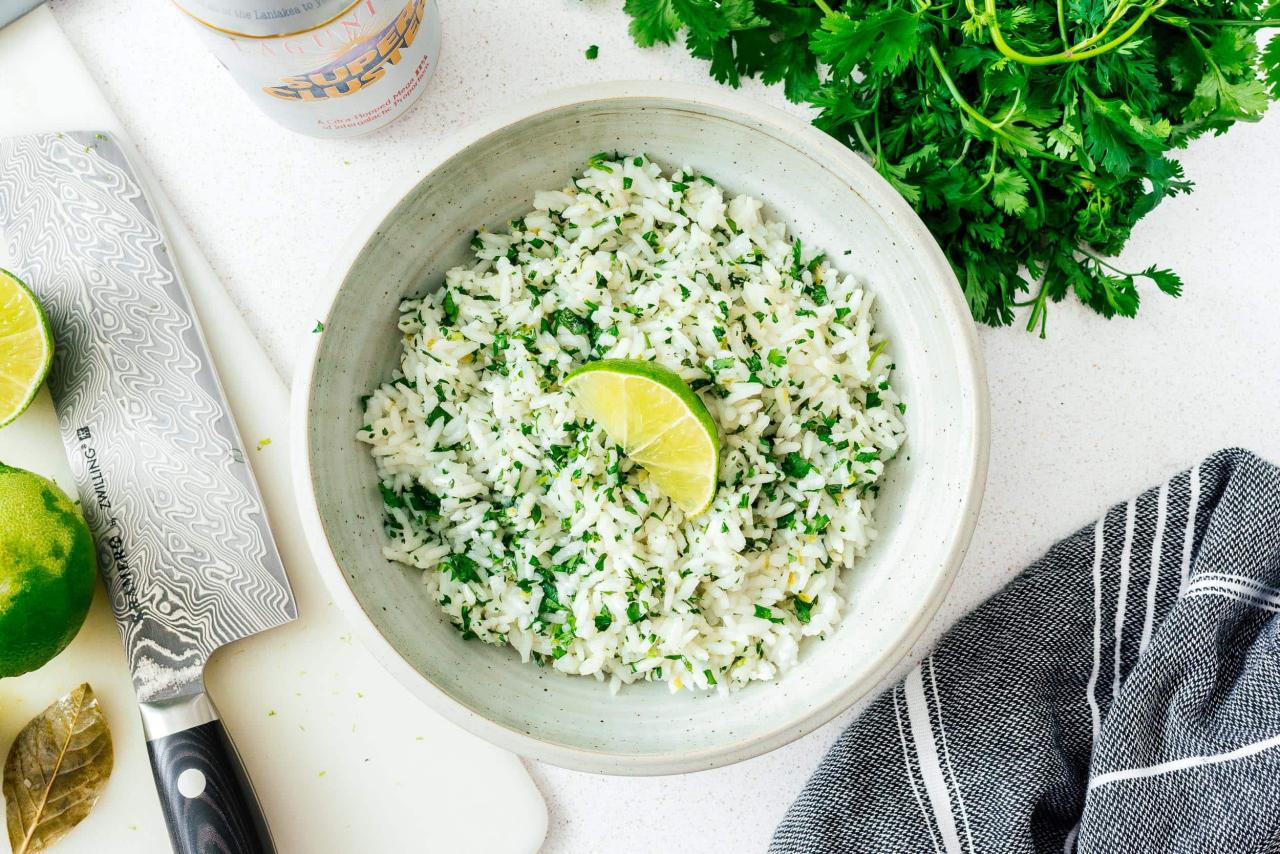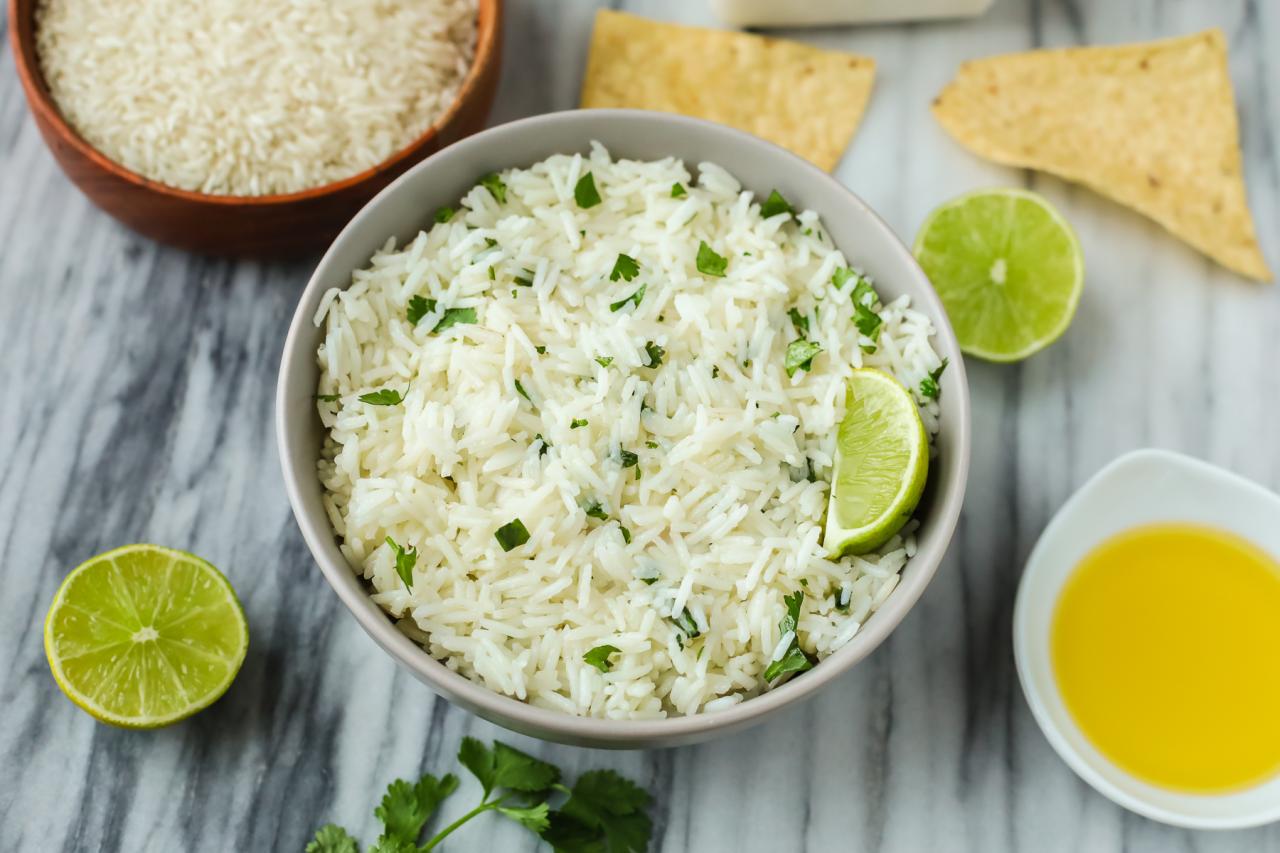Today, I’m excited to share with you a recipe that’s close to my heart: Cilantro Rice. This dish, with its vibrant green flecks of cilantro and gentle aroma of garlic and lime, is more than just a side dish for me; it’s a canvas of memories. Each time I prepare it, I’m whisked back to my grandmother’s bustling kitchen, the air rich with the scents of herbs and spices. She always said that the secret to her cooking was a sprinkle of love—and I’ve carried that wisdom with me ever since.
Join me as we delve into the world of flavors with this easy-to-follow Cilantro Rice recipe that promises to be a bright spot in your culinary adventures. Let’s get cooking!


Cilantro Rice
Equipment
- 1 small heavy saucepan
Ingredients
- 1 cup jasmine rice
- 2 cups water
- 1 teaspoon vegetable oil of choice
- 1 salt
- 3 tablespoons freshly chopped cilantro
- 3 drops doTERRA Lime Essential Oil Optional
Instructions
- In a small heavy saucepan, add rice, water, oil and salt. Bring to a boil and continue to boil until water is just hovering above surface of the rice.

- Cover and simmer for 15 minutes. Turn off heat and allow rice to rest, covered, for another 5 minutes.

- Add cilantro and doTERRA Lime Essential Oil, mix and serve.

Video
Notes
Alternative Methods

When considering alternatives to traditional cilantro rice, one can approach this from various angles such as changing the type of grain, altering the cooking method, or substituting different herbs for cilantro.
Firstly, for those who may not enjoy the taste of cilantro, which can be due to a genetic predisposition causing some individuals to perceive the herb as soapy tasting, alternatives like parsley or a mix of other fresh herbs like chives, dill, or mint could be used. These herbs provide a fresh green flavor without the distinctive taste of cilantro.
Secondly, instead of using white rice, one might consider other grains for a nutritional boost or to meet dietary preferences. Quinoa, for instance, is a complete protein and provides a different texture but can be used as a base for the flavors that typically accompany cilantro rice. Other grains like bulgur, farro, or barley could also be good substitutes, though they will alter the final texture and flavor profile of the dish.
Another variation could involve the use of cauliflower rice for a low-carbohydrate alternative. Cauliflower rice is made by grating cauliflower or pulsing it in a food processor until it resembles the size and texture of rice grains. It can then be sautéed with lime and herbs to mimic cilantro rice.
In terms of cooking methods, traditional cilantro rice is usually prepared by cooking the rice in water or broth until fluffy. For a richer flavor, one could toast the rice lightly in oil before adding the cooking liquid. Additionally, incorporating coconut milk instead of water or broth can impart a creamy texture and a subtle sweetness that pairs well with the brightness of lime and herbs.
Cooking Tips

When discussing cilantro rice, it’s a dish that can evoke a sense of freshness and vibrancy due to the herbaceous notes of cilantro. It’s a versatile side that pairs well with a variety of cuisines, particularly those with Latin or South Asian influences. To create a delightful cilantro rice, one must consider the balance of flavors and the texture of the rice.
Starting with the type of rice, a long grain such as basmati or jasmine is often preferred for its fluffy texture and ability to absorb flavors well. Before cooking, it’s beneficial to rinse the rice until the water runs clear to remove excess starch, which can lead to clumpiness.
The cooking liquid for cilantro rice is also a key component. Using a broth instead of water can impart a deeper flavor profile. Vegetable or chicken broth are common choices that complement the cilantro without overpowering it.
In terms of the cilantro itself, ensuring it’s fresh and finely chopped will distribute its bright, lemony flavor throughout the rice. Some people might have a genetic predisposition to perceive the taste of cilantro as soapy; however, for those who enjoy it, cilantro can add a lively burst of flavor.
For cooking, using a method that allows the rice to steam properly is crucial. After bringing the rice and liquid to a boil, reducing it to a simmer and covering the pot can help achieve the perfect texture. A common emotional response when cooking rice is anticipation, followed by satisfaction when the lid is lifted to reveal perfectly cooked grains.
Once the rice is done, gently folding in the chopped cilantro can prevent the grains from becoming mushy. A squeeze of lime juice not only adds a zesty kick that complements the cilantro but also brightens the dish, making it even more appealing.
Storing & Serving Cilantro Rice

Cilantro rice, a vibrant and flavorful dish, can be both a delightful side or a base for numerous main courses. Its freshness and herbal notes from cilantro blend harmoniously with the subtle warmth of cooked rice, making it versatile in its pairings.
Firstly, cilantro rice often complements Latin American dishes. It pairs exceptionally well with grilled chicken, steak, or fish, especially when these proteins are seasoned with spices that resonate with cilantro’s bright flavor profile like cumin, paprika, and chili powder. The rice can balance the richness of heavier dishes or enhance the lightness of more delicate proteins.
Secondly, considering vegetarian options, cilantro rice serves as an excellent accompaniment to beans, such as black or pinto, to create a complete protein meal. It can also be served alongside roasted vegetables, or used as a stuffing for bell peppers or burritos, adding a fresh dimension to these plant-based dishes.
In terms of presentation, one might consider topping the rice with additional fresh chopped cilantro for an extra burst of flavor and color. A squeeze of lime juice not only adds a zesty brightness but also helps to keep the green color of the herbs vibrant.
For those who enjoy a bit of heat, a drizzle of spicy salsa or a sprinkle of red pepper flakes can add another level of complexity to the rice. On the other hand, for a cooling contrast, a dollop of sour cream or a sprinkle of crumbled cheese such as queso fresco can be added on top.
Cilantro rice can also be incorporated into bowls, such as a burrito bowl, where it forms the base layer atop which other ingredients like lettuce, corn, diced tomatoes, guacamole, and shredded cheese are added.
As for storage and reheating, cilantro rice keeps well in the refrigerator and can be gently reheated, with a splash of water to rehydrate the rice grains and preserve the dish’s texture. This makes it a convenient make-ahead option for meal prepping.
In summary, cilantro rice is a versatile side that can elevate a variety of meals with its fresh, herbal flavor. Whether paired with proteins, stuffed into vegetables, or featured in a colorful bowl, it provides a refreshing counterpart to a wide range of dishes.
FAQs

Here are some frequently asked questions (FAQs) about cilantro rice:
- Can I use brown rice instead of white rice for cilantro rice? Yes, brown rice can be substituted for white rice to make cilantro rice. Keep in mind that brown rice typically requires more cooking liquid and a longer cooking time compared to white rice.
- What dishes pair well with cilantro rice? Cilantro rice pairs well with a variety of dishes, especially those with Latin American or South Asian flavors. It goes well with grilled meats, beans, vegetables, and enchiladas. It can also be served alongside curries and dals.
- How do you store leftover cilantro rice? Leftover cilantro rice should be cooled to room temperature and stored in an airtight container in the refrigerator. It generally keeps well for up to three days. Reheat gently, adding a little water if necessary to prevent drying out.
- Can cilantro rice be frozen? Yes, you can freeze cilantro rice. Let it cool completely, then place it in a freezer-safe bag or container. Frozen cilantro rice can be stored for up to three months. Thaw in the refrigerator overnight before reheating.
- I don’t like the taste of cilantro. Can I substitute it with something else? Cilantro has a distinct flavor that some people dislike. If you’re among them, you could substitute parsley for a different flavor, or simply omit the cilantro altogether for a plain lime rice.
In conclusion, cilantro rice is a vibrant and flavorful dish that can elevate the simplest of meals to something truly special. Whether you’re a seasoned home cook or a beginner in the kitchen, crafting a batch of cilantro rice is a simple yet rewarding endeavor. For those seeking more culinary inspiration and expert advice, Foodies of New England offers a treasure trove of recipes, restaurant reviews, and articles that celebrate the rich tapestry of the region’s gastronomy. Discover the delights of New England’s food scene and bring a touch of its creativity into your own cooking.